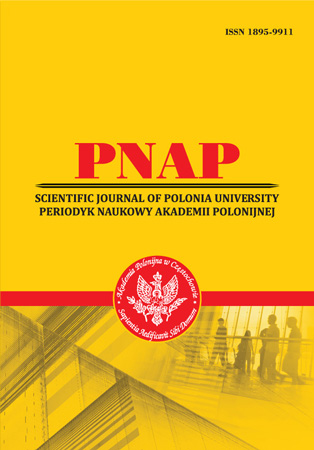CHANGES IN METABOLIC EFFICIENCY IN SKILLED ATHLETES DURING INTENSE EXERCISE
Abstract
The body’s predominant choice of substrates and the rate of their oxidation in the working muscle are largely influenced by physical activity intensity. The higher the intensity of work, the more important role in energy supply processes are played by carbohydrates. It is suggested that the ability to most effectively use fat as an energy substrate at rest and during exercise allows athletes to save carbohydrates to perform high-intensity work. This study investigated the efficiency of metabolism in skilled athletes at rest and during the exercise of increasing intensity. 99 body composition assessments (via bioelectrical impedance) and 99 incremental exercise tests using a gas analysis system were performed in 90 male national- and international-level athletes (age 16-35 y.o.) of sports related to endurance and combat sports. The respiratory exchange ratio in skilled athletes at rest significantly correlates with the values of respiratory exchange ratio when reaching the anaerobic threshold ((r = 0.52, р ≤ 0,05)) and respiratory exchange ratio when reaching the maximum oxygen consumption ((r = 0.52, р ≤ 0,05)) and with the maximum oxygen consumption (r = -0.26, р ≤ 0,05). The oobtained data shows that efficient resting metabolism creates the preconditions for more efficient use of energy substrates during intense muscle activity. The respiratory exchange ratio is an informative indicator of the efficiency of metabolism, which can be used in the complex control of the functional condition of the athlete.
References
2. Burke, L., Deakin, V., & Allanson, B. (2015). Clinical sports nutrition. North Ryde, N.S.W, Australia : McGraw-Hill Education (Australia) Pty Ltd.
3. Carpenter, T. M. (1964). Tables, factors, and formulas for computing respiratory exchange and biological transformations of energy. Washington, D.C.: Carnegie institution of Washington.
4. Carter, S. L., Rennie, C., & Tarnopolsky, M. A. (2001). Substrate utilization during endurance exercise in men and women after endurance training. American Journal of Physiology-Endocrinology and Metabolism, 280(6). doi:10.1152/ajpendo.2001.280.6.e898
5. Coggan, A. R., Raguso, C. A., Gastaldelli, A., Sidossis, L. S., & Yeckel, C. W. (2000). Fat metabolism during high-intensity exercise in endurance-trained and untrained men. Metabolism, 49(1), 122-128. doi:10.1016/s0026-0495(00)90963-6
6. Goedecke, J. H., Gibson, A. S., Grobler, L., Collins, M., Noakes, T. D., & Lambert, E. V. (2000). Determinants of the variability in respiratory exchange ratio at rest and during exercise in trained athletes. American Journal of Physiology-Endocrinology and Metabolism, 279(6). doi:10.1152/ajpendo.2000.279.6.e1325
7. Helge, J., Fraser, A., Kriketos, A., Jenkins, A., Calvert, G., Ayre, K., & Storlien, L. (1999). Interrelationships between muscle fibre type, substrate oxidation and body fat. International Journal of Obesity, 23(9), 986-991. doi:10.1038/sj.ijo.0801030
8. Jeukendrup, A. E., Mensink, M., Saris, W. H., & Wagenmakers, A. J. (1997). Exogenous glucose oxidation during exercise in endurance-trained and untrained subjects. Journal of Applied Physiology, 82(3), 835-840. doi:10.1152/jappl.1997.82.3.835
9. Klein, S., Coyle, E. F., & Wolfe, R. R. (1994). Fat metabolism during low-intensity exercise in endurance-trained and untrained men. American Journal of Physiology-Endocrinology and Metabolism, 267(6). doi:10.1152/ajpendo.1994.267.6.e934
10. Messonnier, L., Denis, C., Prieur, F., & Lacour, J. (2005). Are the effects of training on fat metabolism involved in the improvement of performance during high-intensity exercise? European Journal of Applied Physiology, 94(4), 434-441. doi:10.1007/s00421-005-1325-4
11. Pendergast, D. R., Leddy, J. J., & Venkatraman, J. T. (2000). A Perspective on Fat Intake in Athletes. Journal of the American College of Nutrition, 19(3), 345-350. doi:10.1080/07315724.2000.10718930
12. Rauch, H., Hawley, J., Woodey, M., Noakes, T., & Dennis, S. (1999). Effects of Ingesting a Sports Bar Versus Glucose Polymer on Substrate Utilisation and Ultra-Endurance Performance. International Journal of Sports Medicine, 20(04), 252-257. doi:10.1055/s-2007-971126
13. Romijn, J. A., Coyle, E. F., Sidossis, L. S., Rosenblatt, J., & Wolfe, R. R. (2000). Substrate metabolism during different exercise intensities in endurance-trained women. Journal of Applied Physiology, 88(5), 1707-1714. doi:10.1152/jappl.2000.88.5.1707
14. Seebohar, B. (2014). Metabolic efficiency training: Teaching the body to burn more fat (2nd ed.). USA: Fuel4mance®, LLC.
15. Shils, M. E., & Shike, M. (2006). Modern nutrition in health and disease. Philadelphia, PA: Lippincott Williams & Wilkins.
16. Spriet, L. L. (2002). Regulation of skeletal muscle fat oxidation during exercise in humans. Medicine & Science in Sports & Exercise, 34(9), 1477-1484. doi:10.1097/00005768-200209 000-00013
Abstract views: 397 PDF Downloads: 224







